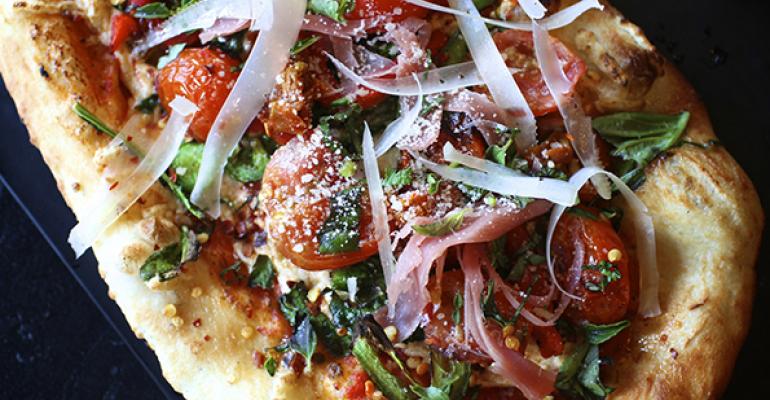Steve Salis and Michael Lastoria were New Yorkers four years ago, searching for a different city to build their first fast-casual pizza restaurant. They ultimately settled on Washington, D.C., in the historic H Street Corridor, and opened the first &pizza location in July 2012.
“When we opened our doors, we had a line out the door,” said Salis, &pizza CEO. “We’ve had a line out the door every single day.”
Today, the chain has nine locations, and last month received a $10 million investment round to build more. Six additional units are slated for the Maryland-D.C.-Virginia area in the first half of the year, and the company plans to hire “higher grade talent to join our tribe,” Salis said.

The investment came from a private family investor. The chain’s board includes Sandy Beall, founder and former longtime CEO of Ruby Tuesday. In addition, the board includes Joe Farina, former partner at Fireman Capital Partners; Edward Albertian, CEO of City Sports Inc.; and John Barton, operating partner with the private equity group LNK Partners.
The three-year-old chain is part of a burgeoning group of fast-casual pizza concepts, but it has the makings to be one of the sector’s more unique brands.
Salis and Lastoria have taken an uncommon approach in building their brand. “Reinventing what pizza should be, based on how Steve and I see the world,” Lastoria noted.
&pizza’s website, for instance, has no pictures of food, only stylish black-and-white photos of people like airline pilots or skateboarders.
The pizza itself is different, beginning with the shape — it’s 17 inches long and six inches wide — and diners can make their own.
Customers can choose from dough styles, including a gluten-free option, and toppings range from artichokes to fried eggs. The pizzas are cooked in the oven and finished with raw accouterments like feta cheese and olives.
The chain also offers signature pizzas, such as the “Kiss & Fire,” which has spicy tomato, ricotta spread, Quattro Formaggi blend, a local mushroom blend, meatballs and strawberry balsamic. There is also a “Grecian Market” pizza with red chickpea purée, local mushrooms, broccoli, falafel crumbles, kalamata olives, pickled red onions, crumbled feta cheese and tzatziki yogurt.
“We wanted to break conventional wisdom with a more sophisticated pizza offering,” Salis said. The founders created pizzas that “we felt were bold, but we felt strongly that they tasted great. It allows us to educate our guest to think about new ways to do pizza.”
Of course, less adventurous diners can get more basic ingredients, like pepperoni, sausage and onions. “We’ve made bold bets in some areas, but we haven’t necessarily shunned those who want to keep things simple,” Salis said.
Salis and Lastoria also wanted to sell their pizzas in an old-style community environment that harkens back to the days of local pizza shops.
“A lot of my fond memories come from time spent in a local pizza shop,” Salis said. “I used to spend Fridays there with my grandparents and people who were influential in my life. Everybody had a sense of ownership.”
Salis spent years working with bars and lounges, and ultimately started consulting with restaurant entrepreneurs before deciding to work with Lastoria on their own brand.
&pizza has a flexible footprint, and locations range from 1,200 square feet to 1,500 square feet. The brand has a large take-away business, and about 40 percent of business is during lunch, Salis said.
Most of its current locations are in urban areas, locations Salis described as “progressive, sticky or edgy.” He called it a counterintuitive real estate strategy that looks for emerging communities.
“We’ve generally taken gambles on communities that most brands and businesses have not,” Salis said. “We’ve gone in and seen these types of communities that need a brand like us.”
As it grows, &pizza is testing out more mainstream locations. The chain plans to open nontraditional locations at Reagan National Airport and Dulles International Airport. It is also opening suburban locations to see how the brand works in non-urban environments.
“The suburbs has a different consumer,” Salis said. “We’re learning a lot about that. We’re testing the versatility of the brand.”
Contact Jonathan Maze at [email protected].
Follow him on Twitter: @jonathanmaze





